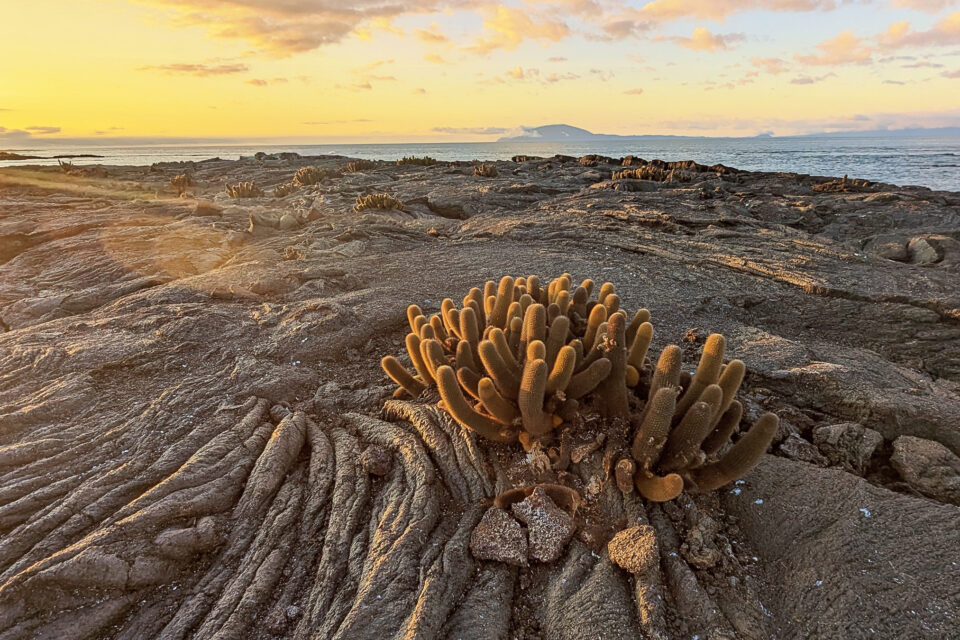

Blue Carbon, Climate Change and the Galapagos Islands
GCT is working to protect marine biodiversity by keeping the fish in the sea and the pollution out, increasing the ability of the ocean to act as a carbon sink.
As we discussed in our previous blog, ocean protection is key to climate resilience. The global ocean and the species that live there play a major role in capturing carbon from the atmosphere – called blue carbon. This capture is inhibited by the increasing levels of pollution, habitat degradation and overfishing. Galapagos Conservation Trust (GCT) is working to protect marine biodiversity; by keeping the fish in the sea and keeping pollution out. Therefore, we are increasing the ability of the ocean to act as a natural carbon sink. Healthy oceans have a greater chance of withstanding the impacts of a changing climate.
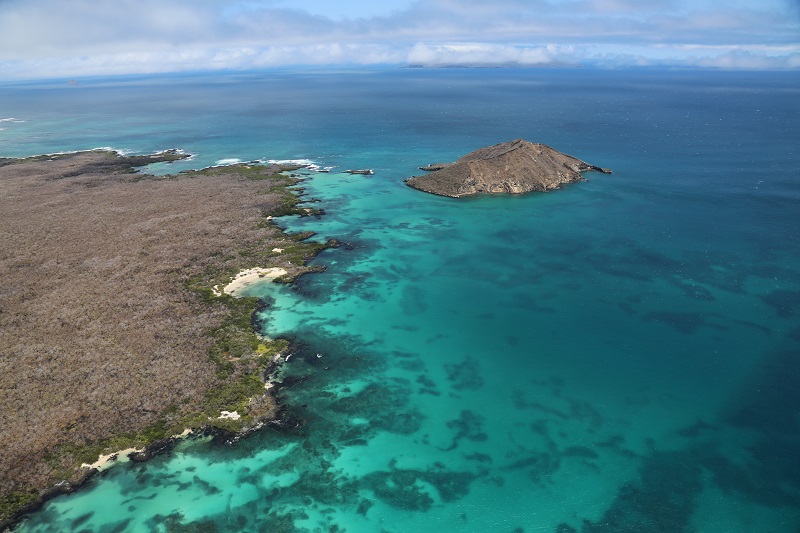
Are there blue carbon sinks in Galapagos?
Mangroves cover about 35% of Galapagos’ coastline. Ensuring that mangrove habitats are protected into the future is a priority for Galapagos, especially for the co-benefit of healthy fisheries. Mangroves are vital nurseries for many commercial fish and invertebrates in Galapagos, and for sharks and rays, including the Critically Endangered scalloped hammerhead shark. Protecting mangrove sites protects important carbon sinks as well as our future generations of sharks. The mangroves of Isabela are extremely important, as they are the only habitat for the Critically Endangered mangrove finch, one of Darwin’s finches.
The Galapagos Marine Reserve is home to one of the highest concentrations of sharks in the world and is a crucial location for Critically Endangered scalloped hammerheads. It is one of the only places globally where large numbers still reside. Its whale shark population is also globally rare, as it consists of mostly mature females instead of juvenile males found in other hotspots.
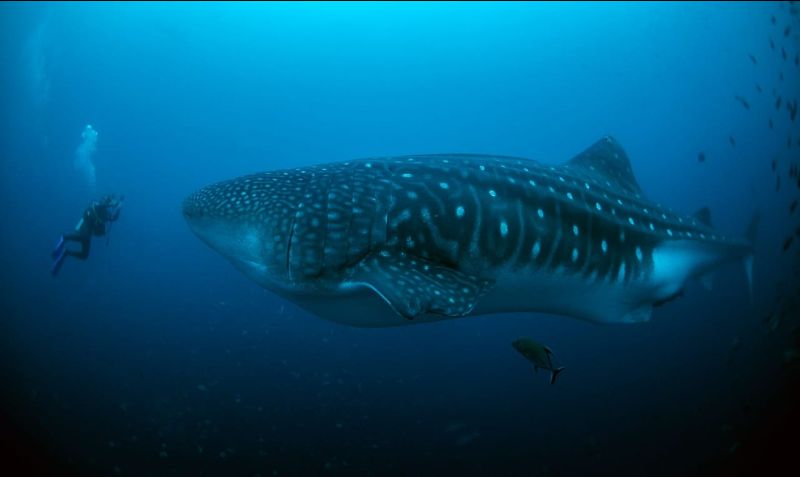
How is GCT working to protect blue carbon in Galapagos?
The Galapagos whale shark project is the first in the world to describe the connection between whale sharks and the deep sea. We want to know how long a whale shark dives for and their relationship with the deep-sea environment – a potential carbon flux. By learning crucial insights into the lives of these ocean giants, we’re able to protect them by informing management strategies. We’re also supporting the expansion of the Galapagos Marine Reserve and the creation of a proposed protected Swimway between Galapagos and Cocos island (Costa Rica) which will in turn protect whale sharks and other migratory species.
Protecting healthy oceans and restoring degraded habitats are vital for blue carbon. Plastic pollution is also a massive problem in the fight for a healthy ocean and against climate change. Plastic waste is physically polluting the waters and killing marine megafauna – at least 38 different species in the Galapagos Islands, including turtles, marine iguanas and sea lions, have been recorded as being negatively affected by plastic pollution. Greenhouse gases are also emitted at every stage of the plastic lifecycle, from extracting fossil fuels to managing plastic waste. Our Plastic Pollution Free Galapagos programme is working to support the Galapagos National Park and a network of community groups, NGOs, businesses and researchers to make Galapagos plastic pollution-free once again.
Through our grassroots projects and work with the Galapagos community, we’re amplifying local voices. Through Co-Galapagos, we’re supporting the local community to achieve the UN’s Sustainable Development Goals (SDGs) by 2030. These SDGs are 17 global goals that promote peace and prosperity for all people, protection for the planet and, partnerships to achieve these aims; including climate action and life below water.
GGT is also working to expand our marine protection work this year looking into how whales use the Galapagos Marine Reserve, researching and protecting rays, and reducing bycatch in fisheries through our upcoming Rebalancing the Scales project.
What can I do to help?
Take climate action today: share your climate change pledges, tell us what worries you most about climate change in Galapagos and donate to our Climate Change Appeal.
Related articles

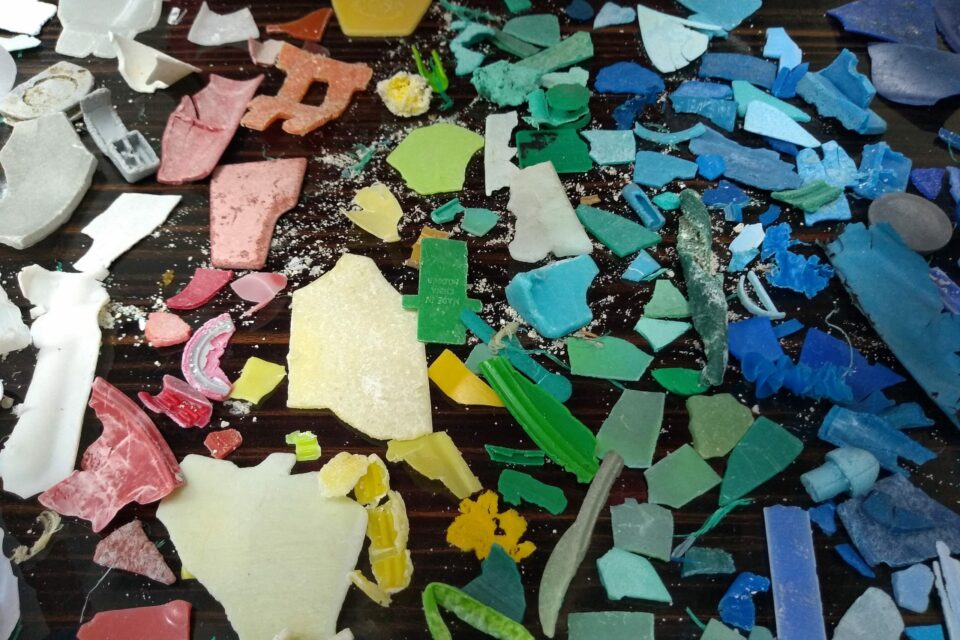
Climate change and plastic pollution: the inextricable link
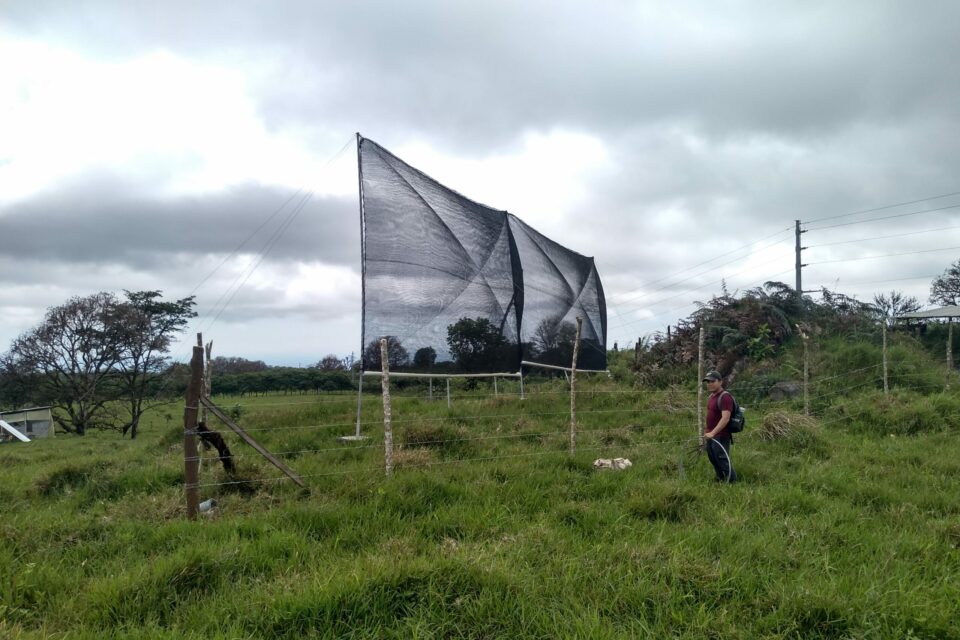
Santa Cruz: The Evolution of the Agricultural Zone


